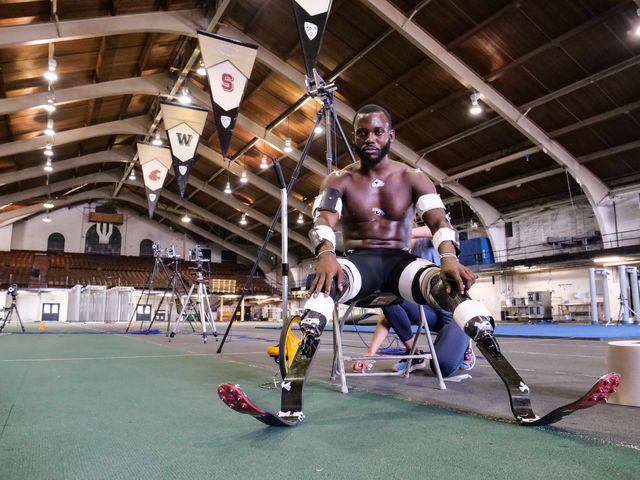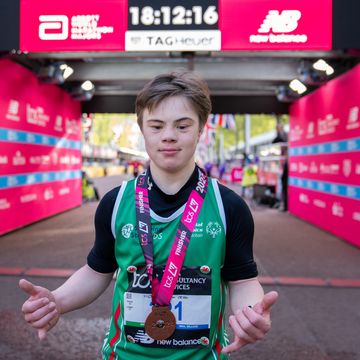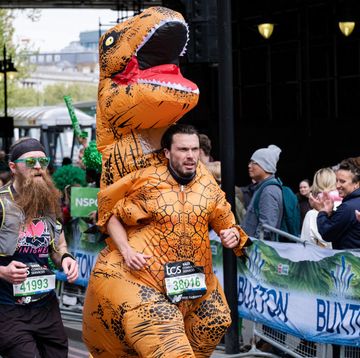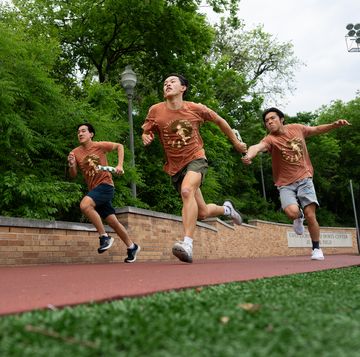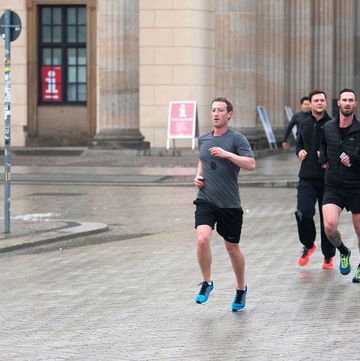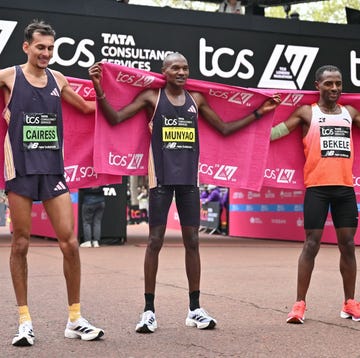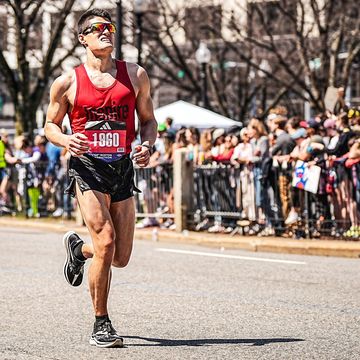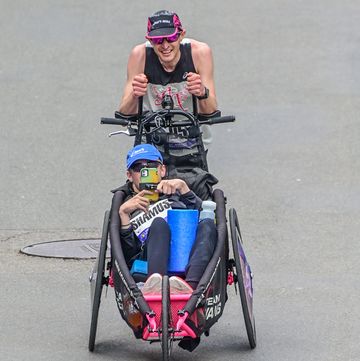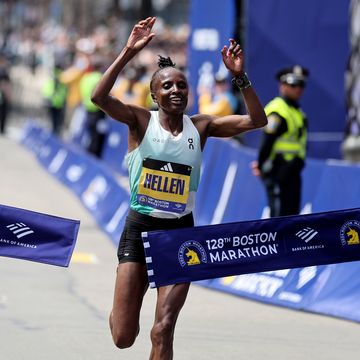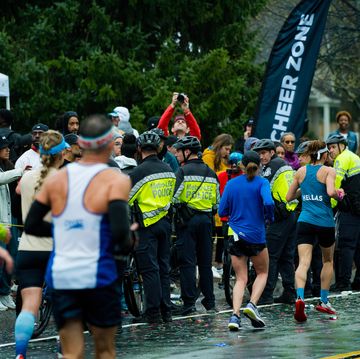Blake Leeper started slowly in the men’s 400 meters at the 2018 Josef Odložil Memorial meet in Prague on June 4. But as he hit the back stretch, the American sprinter began to pick up the pace. His sleek, black racing blades continued to propel him past other runners, until he heaved himself across the finish line, more than a second ahead of three-time world indoor 400-meter champion Pavel Maslák.
His time, 44:42, was not only the fastest recorded 400 time by a bilateral amputee in history, but also the 10th fastest time worldwide and the fourth fastest American time this year.
With that race, a new chapter in the saga of athletes with disabilities had begun. Leeper, like other para runners before him, is seeking to cross over and compete with able-bodied athletes. But like those before him, he's is facing a tough battle. It’s just the latest for the Paralympic silver medalist, who has previously overcome alcoholism and a suspension for drug use.
[Blast through a series of HIIT sessions to boost running strength and prevent injury with the IronStrength Workout.]
First came Oscar Pistorius, initially denied by the International Association of Athletics Federations (IAAF), then approved on appeal by the Court of Arbitration in Sport, allowing him to race at the London Olympics. Then German long jumper Markus Rehm attempted to compete at the Rio Olympics, but a slight rule change by the IAAF barred him. And just last year, Hunter Woodhall became the first bilateral amputee to compete in the NCAA.
In order to be allowed to compete, Leeper needs to prove that his prosthetic blades don’t give him any advantage in his sport, but he’s already hitting roadblocks. His Prague world record remains unofficial, and his recent performances off the books, while the IAAF determines his eligibility and the International Paralympic Committee recalculates if his blades are allowed under new 2018 maximum allowed height of prosthetics rules.
That’s why Leeper—who was born without lower legs and has used prosthetics almost his entire life—has connected with Alena Grabowski, Ph.D., a veteran biomechanics researcher at the University of Colorado at Boulder who was part of the team that provided evidence for Pistorius’s successful appeal. He’s hoping that working with her lab can help make his case before the IAAF that he should be able to become the second amputee runner to compete at the Olympic Games.
“At the end of the day, I have nothing to hide,” Leeper says. “My main goal is to get back to running. I want to be the best in the world, legs or no legs.”
But the road to approval won’t be easy. For Rehm’s case, the IAAF tweaked its rules: Instead of the IAAF having to prove Rehm did have an advantage, Rehm had to show he didn’t have one, crucially shifting the burden of proof. Rule 144 now states that a mechanical aid is not allowed, “unless the athlete can establish on the balance of probabilities that the use of an aid would not provide him with an overall competitive advantage.”
An IAAF spokesperson said in an email to Runner’s World that the organization’s rule is “clearly stated,” but Roger Pielke, Ph.D., a professor at CU Boulder’s Center for Sports Governance, calls the current regulatory landscape “a masterpiece of ambiguity.” Shifting the burden of proof to the other side creates an almost unattainable higher standard, he says.
“As a researcher, I don’t even know what it means to prove no advantage, because you’re trying to prove a negative,” Pielke says. “It sets up this situation of endlessly dueling experts. We can cherry pick the evidence to get whatever result we want.”
Past cases are direct evidence. With Pistorius, two teams reached opposite conclusions. The researchers that tested Rehm determined his prosthetic was an advantage during a jump, but not in the run-up or overall, but couldn’t meet the tougher higher standard. The argument against para athletes usually hinges around the possible bonuses that come with prosthetics: the equivalent of a fatigue-less, lightweight lower leg and greater energy return. But that’s weighed against factors like a slower start, immense physical discomfort, and the obvious neurological disconnect.
In all her time studying these issues, Grabowski says her research has never found evidence of a clearly unfair advantage for athletes using running blades. But the lack of widely-accepted standards for testing and interpretation muddies the waters so much she could never truly prove the lackof an advantage. All she can do is measure as many variables—such as velocity, endurance, metabolism, and ground reaction forces—as possible and present her findings.
Leeper says he can empathize a bit with those who are against him competing simply because blade runners are still an unexpected sight. But the idea that he has an advantage over able-bodied athletes is almost laughable.
“They told me I would never walk, and now I have to collect data to show I don’t have an unfair advantage,” Leeper says. “At the end of the day, people don’t realize what I have to go through on a daily basis just to get to the track. If it was easy, if it was such an advantage, then a lot more people would cut their legs off and wear blades.”
Then there’s another, more socio-political reason in favor of Leeper becoming an Olympian. The Convention on the Rights of Persons With Disabilities, signed by 161 countries in 2006, says people with disabilities have the right to “participate on an equal basis with others in … sporting activities,” and that society has a responsibility to “encourage and promote the participation, to the fullest extent possible, of persons with disabilities in mainstream sporting activities at all levels.”
Beyond that standard is the concept of “reasonable accommodation,” prominently featured in the Americans With Disabilities Act, for example. Here, too, Leeper seems to be in a good place; blade runners use the same track and stay in their lane just like able-bodied athletes do.
“What the IAAF has done by reversing the burden of proof is they’ve in effect created a ban against athletes with prosthetics, which completely defies the definition of reasonable accommodation,” Pielke says. “At present, what is being done is arguably discriminatory.”
The whole situation doesn’t completely add up to Leeper. The sport is constantly improving across the board—everything from spikes to weight training advice to nutrition advances—“but when you’re talking about a disabled individual, that’s when the line is under scrutiny?”
“The only thing I’m asking for is a shot,” Leeper says. “No special treatment, I just want a chance.”
Between now and the summer of 2020, Leeper will learn if he can become an Olympian. A ban would devastate him, he admits it. But he hasn’t lost sight of the bigger picture.
“If there’s a kid out there that’s missing his legs and can see my story, if the next generation will be looked at in a different light, if the next blade runner or disabled person will have a better chance, then that’s a win,” Leeper says. “Yeah, we might be disabled, but we’re just as good. We’re elite athletes that can compete at the highest level.”

Jacob joined Runner’s World and Bicycling as an editorial fellow after graduating from Northwestern University in 2018, where he studied journalism. His work focuses mainly on news and service pieces for both audiences, with the occasional foray into longer feature work and product reviews. He especially loves to highlight the journeys of unique runners and riders doing amazing things in their communities.
